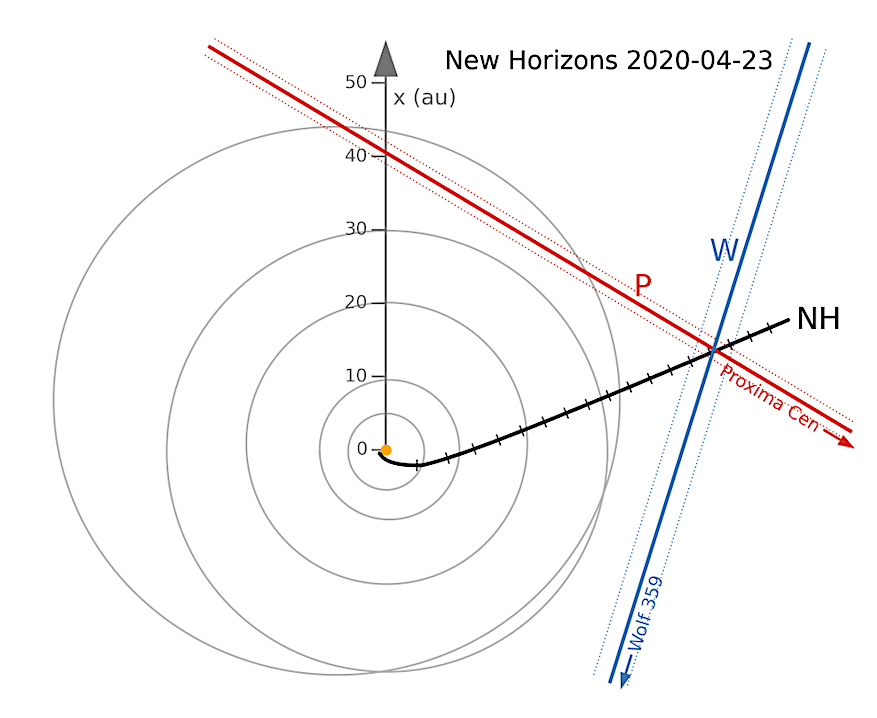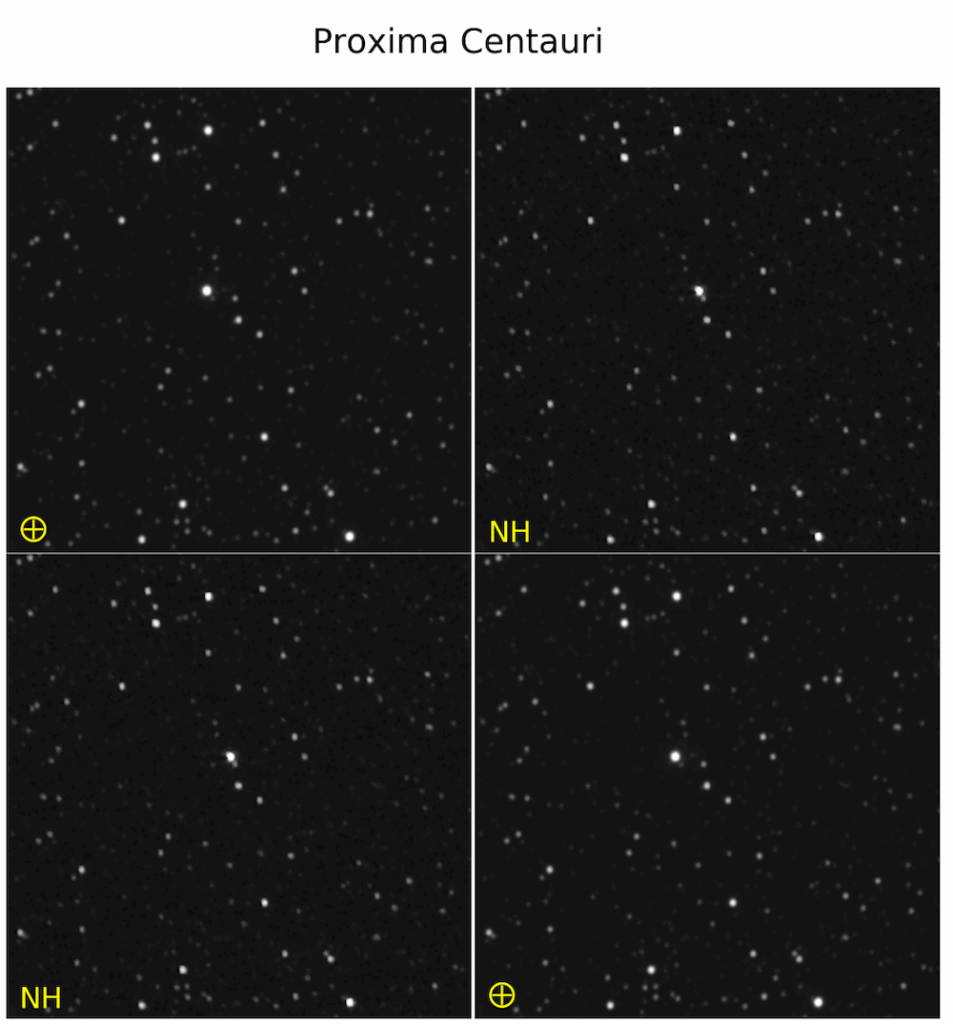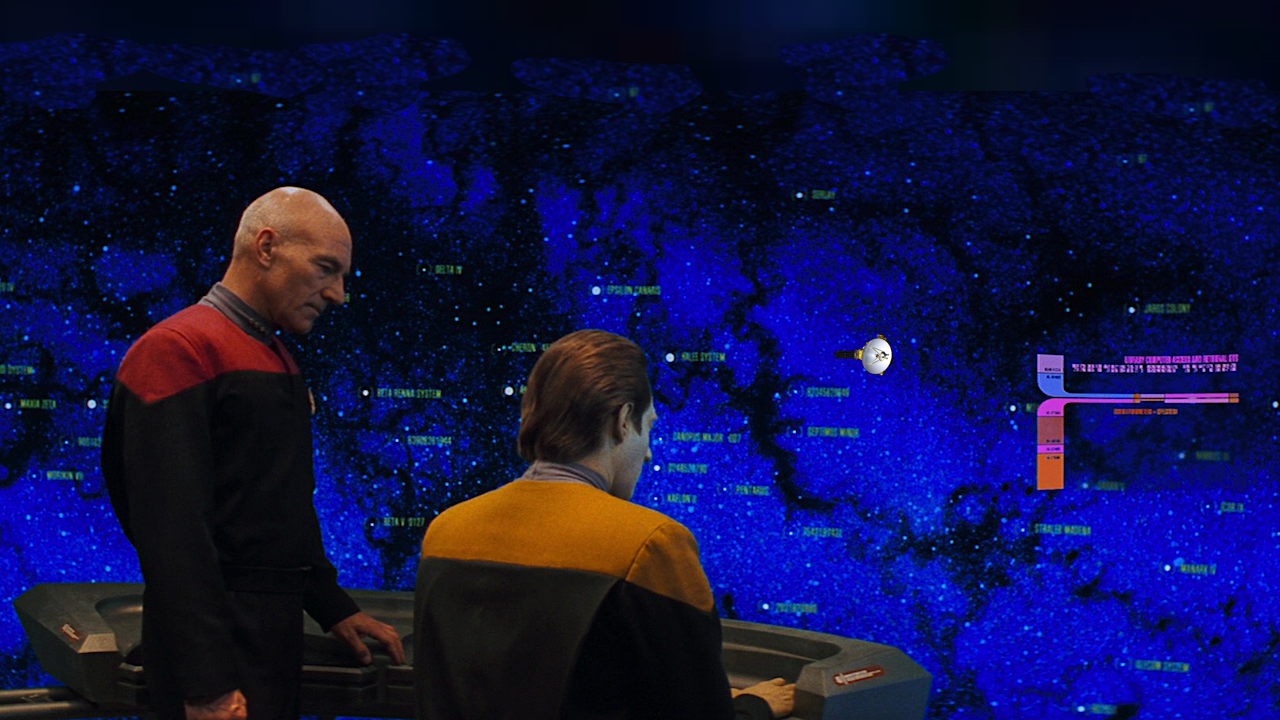Stellar Cartography tracking session for New Horizons — Paramount/Astrobiology.com
Editor’s note: Those of you in the space community know that NASA Science is facing an immense budget cut. Dozens of missions have been cancelled and many missions that are still returning valuable data are being shut off – in many cases to save a few million dollars – a tiny fraction of what it took to mount the missions in the first place. This data will be lost. In the case of New Horizons, currently traversing the outer solar system, NASA is going to forfeit a third interstellar mission (after the twin Voyagers). This latest interstellar mission would be done with a healthy spacecraft outfitted with 21st century instrumentation. We could continue to expand America’s pre-eminent exploration of interstellar space until the middle of this century. And that lead will last unchallenged for a generation or more to come. But instead we are going to shut off this explorer – and many others – long before they cease to explore the unknown.
As NASA’s New Horizons spacecraft exits the Solar System bound for interstellar space, it has traveled so far that the nearest stars have shifted markedly from their positions seen from Earth.
We demonstrated this by imaging the Proxima Centauri and Wolf 359 fields from Earth and New Horizons on 2020 April 23, when the spacecraft was 47.1 au distant. The observed parallaxes for Proxima Centauri and Wolf 359 are 32.4″ and 15.7″, respectively.
These measurements are not of research grade, but directly seeing large stellar parallaxes between two widely separated simultaneous observers is vividly educational. Using the New Horizons positions of the two stars alone, referenced to the three-dimensional model of the solar neighborhood constructed from Gaia DR3 astrometry, further provides the spacecraft spatial position relative to nearby stars with 0.44 au accuracy.
The range to New Horizons from the Solar System barycenter is recovered to 0.27 au accuracy, and its angular direction to 0.4∘ accuracy, when compared to the precise values from NASA Deep Space Network tracking. This is the first time optical stellar astrometry has been used to determine the three-dimensional location of a spacecraft with respect to nearby stars, and the first time any method of interstellar navigation has been demonstrated for a spacecraft on an interstellar trajectory.
We conclude that the best astrometric approach to navigating spacecraft on their departures to interstellar space is to use a single pair of the closest stars as references, rather than a large sample of more distant stars.

The location of New Horizons on 2020 April 23 as derived from the directions to Proxima Cen and Wolf 359 measured from the spacecraft. The view is from the ecliptic north pole; the vertical axis is at zero RA. Gray circles show the orbits of the outer planets. Line of position P passes through the Gaia 3-D location of Proxima Cen, in the direction measured from the spacecraft; the observations of Proxima Cen thus constrain the spacecraft to lie on line P. Similarly, observations of Wolf 359 constrain the spacecraft to lie on line of position W. The faint dotted lines show how much P and W would be displaced by a 1 ′′ change in line direction; the transverse displacement in au is just the distance to the star in pc (1.30 for P, 2.41 for W). The trajectory NH is the actual path of the spacecraft from launch in 2006 through 2023, marked with yearly tickmarks. The actual angular uncertainties are much less than the 1′′ indicated by the dotted lines. Line P is inclined ∼ 45◦ from the ecliptic plane; line W and the NH trajectory are inclined less than 2◦ from the ecliptic. — — astro-ph.IM

The Earth-based and New Horizons images of Proxima Centauri and its star field are shown side by side to demonstrate the large Earth-spacecraft parallax. Proxima Cen is the bright star near the center of the field. The field shown is 10′ × 10′ . North is at the top. The image pairs have been prepared to a common image scale, field, and orientation so that the parallax can also be recognized with stereo imaging. The top pair is positioned for “cross-eyed” viewing. Crossing your eyes to view the NH-based image with the left eye, and the Earth-based image with the right eye, will create the appearance of Proxima Cen floating in front of the background stars. The two images are swapped in position in the bottom row to allow for parallel viewing. In this case, the left eye views the left panel, and the right eye the right panel. Parallel viewing can also be done by mounting the images in a stereoscopic viewer. Our experience on the New Horizons team is that there is no clear preference between cross-eyed vs. parallel viewing. — astro-ph.IM
Tod R. Lauer, David H. Munro, John R. Spencer, Marc W. Buie, Edward L. Gomez, Gregory S. Hennessy, Todd J. Henry, George H. Kaplan, John F. Kielkopf, Brian H. May, Joel W. Parker, Simon B. Porter, Eliot Halley Vrijmoet, Harold A. Weaver, Pontus Brandt, Kelsi N. Singer, S. Alan Stern, Anne. J. Verbiscer, Pedro Acosta, Nicolás Ariel Arias, Sergio Babino, Gustavo Enrique Ballan, Víctor Ángel Buso, Steven J. Conard, Daniel Das Airas, Giorgio Di Scala, César Fornari, Jossiel Fraire, Brian Nicolás Gerard, Federico González, Gerardo Goytea, Emilio Mora Guzmán, William Hanna, William C. Keel, Aldo Kleiman, Anselmo López, Jorge Gerardo Machuca, Leonardo Málaga, Claudio Martínez, Denis Martinez, Raúl Meliá, Marcelo Monópoli, Marc A. Murison, Leandro Emiliano Fernandez Pohle, Mariano Ribas, José Luis Ramón Sánchez, Sergio Scauso, Dirk Terrell, Thomas Traub, Pedro Oscar Valenti, Ángel Valenzuela, Ted von Hippel, Wen Ping Chen, Dennis Zambelis
Comments: Accepted for publication in the Astronomical Journal. The introduction includes a link to the Jupyter notebook and images used in the analysis
Subjects: Instrumentation and Methods for Astrophysics (astro-ph.IM)
Cite as: arXiv:2506.21666 [astro-ph.IM] (or arXiv:2506.21666v1 [astro-ph.IM] for this version)
https://doi.org/10.48550/arXiv.2506.21666
Focus to learn more
Submission history
From: Tod R. Lauer
[v1] Thu, 26 Jun 2025 18:00:02 UTC (4,720 KB)
https://arxiv.org/abs/2506.21666
Astrobiology, Interstellar, Stellar Cartography,
